After almost a week in Virginia, it's good to be home; back to familiar surroundings and the comfort of normal routines. Even so, we enjoyed a great time with gracious hosts and several hundred attendees at the CAA's 2016 conference. The weather was reasonably comfortable for the time of year, making it nice to get out and take in the sights of Colonial Williamsburg. Ultimately, Ultimately, I'd rank the 2016 CAA Symposium at Colonial Williamsburg as one of the best early vehicle events I've attended. The organizers assembled an incredible array of speakers from around the world. The end result was a vast amount of information shared; so much, that it easily overwhelmed my note-taking abilities.
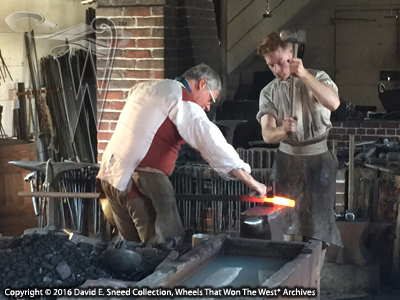 |
| Blacksmiths at Colonial Williamsburg work on all types of projects - from wagon axles to door hinges. |
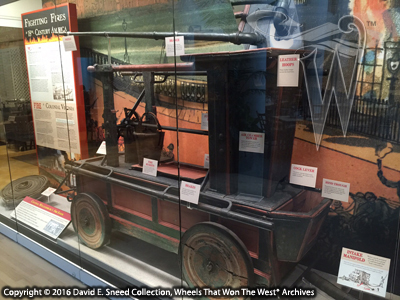
This circa 1750 Newsham & Ragg fire engine is housed in the Art Museum at Colonial Williamsburg. Along with other artifacts, it offers an extremely rare look at early American fire equipment.
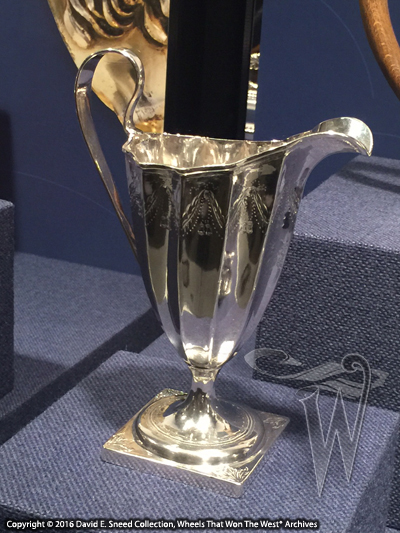
This silver pitcher (labeled as a porringer) from a tea service will date to the late 1700's. It was produced in Paul Revere's silversmith shop.
Spread over four days, the event included fourteen speakers from the U.S., Norway, England, France, Austria, Canada, Russia, and Germany. On the surface, it might sound like so much diversity that continuity and cohesion between the presentations would be a challenge. On the contrary, each presenter built on the intrigue of another. From the subtle humor of Alexander Sotin of Russia and Colin Henderson, the Queen of England's retired head coachman, to Andreas Nemitz's coverage of the breath-taking views and adrenalin-pumping drama of coaching through the extreme heights and switch-back roads of the Alps, the international flavor of the event created a fullness to the topics not typically available. I also enjoyed the wealth of details in talks by Monica Kurzel-Runtscheiner, Laurier Lacroix, Stephan Broeckx, and Bjorn Hoie.
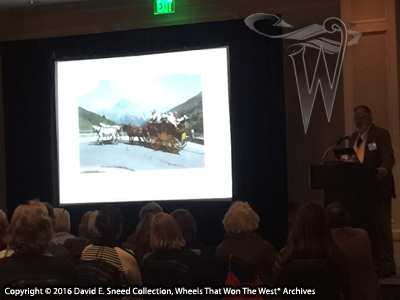
The images Mr. Nemitz shared of the coaching tours over the Alpswere equal parts beauty and adventure, rolled into what is surely the experience of a lifetime.
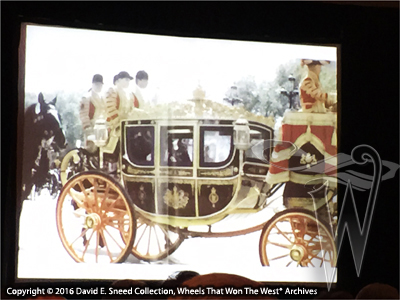
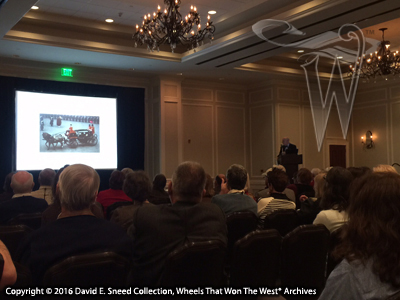
Those speaking on topics relating to American stage coaching as well as U.S. military and western vehicles included Ken Wheeling's review of touring coaches in New Hampshire (I always try to be a sponge around Ken. His knowledge of American stagecoaches - especially Concords is unmatched). Michael Sanborn, from the Banning Museum in Wilmington, California, shared about the Banning Family Carriages (coaches) of Catalina Island. Michael's talk left me wanting to visit Catalina Island to view the historic terrain and surviving coaches there! Similarly, Josh Ruff, from the legendary Long Island Museum collection of vehicles, shared about the use of the Talley-Ho road coach in New York City.
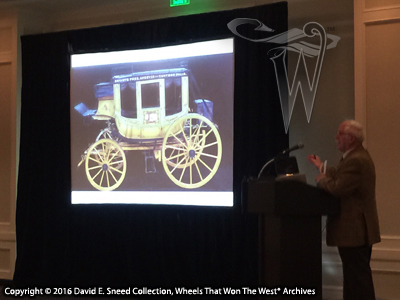
Ken Wheeling's presentation on touring coaches included details on all types of Concord stagecoaches. Good stuff!
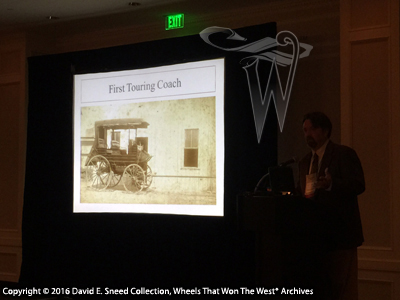
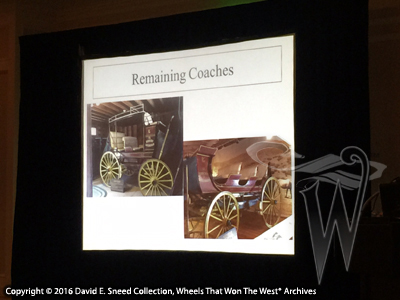
Immortalized in song and steeped in history, the story of Santa Catalina Island and its coaches was presented by Michael Sanborn, Director of the Banning Museum in Wilmington, California.
Greg Hunt, an acclaimed harness maker/repairer from Wisconsin, spoke on horse-drawn military tack. The presentation included the overall design purposes of that equipment as well as more detailed evaluations of artillery harness and McClellan artillery and riding saddles. Greg also shared specifications related to period Escort wagon harness. Likewise, we received a number of kind words for our presentation covering the often-overlooked designs and technology in early western wagons and military vehicles.
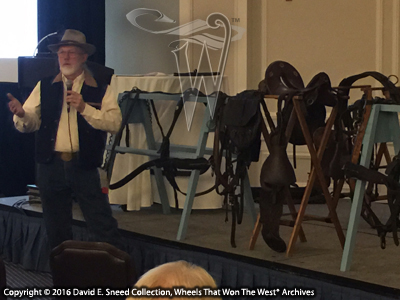
Greg Hunt's presentation on military tack delved into a rare, and often misunderstood, topic.
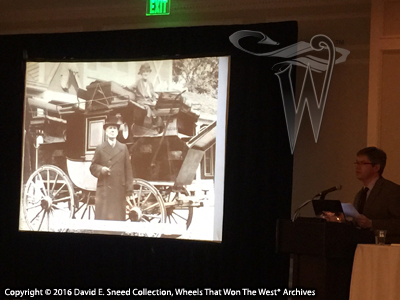
Josh Ruff, of the famed Long Island Museum (Stony Brook Vehicle Collection), spoke on the Talley-Ho public coaches once used in New York.
As educational and helpful as all of the talks were, one of the segments was especially emotional. SSG John S. Ford shared some rare, behind-the-scenes details related to the ceremonial horse and caisson presentations provided in Arlington National Cemetery. You've likely seen these processions before, as six horses draw an original, model 1918 caisson holding the casket of a dignitary. From presidents to ranking officers as well as those who have given the ultimate sacrifice in the line of duty, the caisson platoon provides this remarkable measure of respect to all branches of U.S. military service. Due to the unique nature of this topic, I hope to share even more from this presentation in an upcoming blog. Suffice it to say, if you love America and the liberty we're afforded here, the caisson platoon is one more reminder of how special and valuable the gift of freedom truly is. In like fashion, we salute the service men and women who guard our independence, preserving a blessed way of life we should never take for granted.
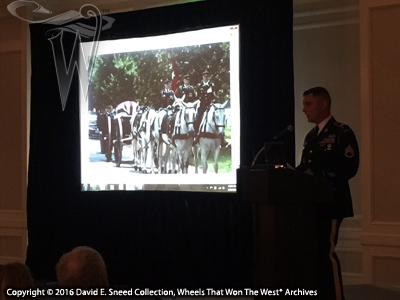
SSG John S. Ford's presentation on the ceremonial horse and caisson processions in Arlington National Cemetery was more than informative. It was an incredibly emotional and patriotic salute to the fallen heroes of America's armed services.
Thanks again to the CAA, Jill Ryder, Jennifer Singleton, Mindy Groff, Ken Wheeling, and Richard Nicoll for their support and assistance during the conference. A special shout out to Stan and Kay Stefancic who made sure that our trips to and from the airport were worry-free. The CAA conducts this symposium every two years in conjunction with the wonderful folks and impressive campus of Colonial Williamsburg. If you have an opportunity to attend the event in 2018, I'd highly recommend the trip.
Please Note: As with each of our blog writings, all imagery and text is copyrighted with All Rights Reserved. The material may not be broadcast, published, rewritten, or redistributed without prior written permission from David E. Sneed, Wheels That Won The West® Archives.